#AI Development Partner in France?
Explore tagged Tumblr posts
Text
0 notes
Text
Get To Know You Tag
Thanks @kay-elle-cee for tagging me!
Last song: I listen to a lot of 70s zamrock when I work so the last song I listened to was ‘Kale’ by Amanaz—-but my husband has been singing ‘sous la lune’ by Jul the better half of the week now (by singing I mean the one part where it just goes dododododooodooo which makes it worse) and it’s perpetually stuck in my head.
Favourite colour: An autumny mustardy orange or any shade of green!
Last movie: In Cinema: Barry Lyndon by Kubrick. At Home: Blue Velvet by David Lynch (I’m still mourning his death. It’s very difficult for me.)
Last TV Show: Alright so I am admittedly bad at watching TV shows because my brain often has a tap out limit of 3 seasons usually BUT I have a revolving ‘go to’ list of shows that I put on when I’m exhausted after work. This most recent iteration is : Sopranos, Arrested Development, Derry Girls, or Twin Peaks.
Sweet/Spicy/Savoury: Sweeeet! There isn’t a day I don’t eat haribo candy…..
Relationship Status: I am PACSed with my partner in France which is the closest equivalent to a civil partnership if you are from the States—-but it’s significance varies greatly by the person you talk to and it is absolutely not recognized outside of the EU (so my American inlaws do NOT think we are at all married). But! It technically works as a ‘marriage light’ and makes doing taxes and boring things easier. I oscillate between calling my partner husband and bf which I’m sure confuses a LOT of people ( or they think it’s 2 different people which is even funnier)
Last Thing I Googled: The Brutalist AI scandal (really interesting and scary for the future of cinema!)
Current Obsession: uhhhh. Jily but really—if you looked at my personal twitter right now it’s literally just me sobbing about David Lynch—-so probably that. So much for saying I’d never have a parasocial relationship! Oh, also theres some hot gossip about one of my old shitty works back in the States suing another local entity and its so messy and juicy and its fun to read news articles and be like ‘hey, I know that guy!’
Looking Forward To: The winter holiday which starts in two weeks! (Totally not counting down)
I tag @eastwindmlk and @petals2fish if you feel like it!
5 notes
·
View notes
Text
UK and France to collaborate on AI following Horizon membership
New Post has been published on https://thedigitalinsider.com/uk-and-france-to-collaborate-on-ai-following-horizon-membership/
UK and France to collaborate on AI following Horizon membership
.pp-multiple-authors-boxes-wrapper display:none; img width:100%;
The UK and France have announced new funding initiatives and partnerships aimed at advancing global AI safety. The developments come in the wake of the UK’s association with Horizon Europe, a move that was broadly seen as putting the divisions of Brexit in the past and the repairing of relations for the good of the continent.
French Minister for Higher Education and Research, Sylvie Retailleau, is scheduled to meet with UK Secretary of State Michelle Donelan in London today for discussions marking a pivotal moment in bilateral scientific cooperation.
Building upon a rich history of collaboration that has yielded groundbreaking innovations such as the Concorde and the Channel Tunnel, the ministers will endorse a joint declaration aimed at deepening research ties between the two nations. This includes a commitment of £800,000 in new funding towards joint research efforts, particularly within the framework of Horizon Europe.
A landmark partnership between the UK’s AI Safety Institute and France’s Inria will also be unveiled, signifying a shared commitment to the responsible development of AI technology. This collaboration is timely, given France’s upcoming hosting of the AI Safety Summit later this year—which aims to build upon previous agreements and discussions on frontier AI testing achieved during the UK edition last year.
Furthermore, the establishment of the French-British joint committee on Science, Technology, and Innovation represents an opportunity to foster cooperation across a range of fields, including low-carbon hydrogen, space observation, AI, and research security.
UK Secretary of State Michelle Donelan said:
“The links between the UK and France’s brightest minds are deep and longstanding, from breakthroughs in aerospace to tackling climate change. It is only right that we support our innovators, to unleash the power of their ideas to create jobs and grow businesses in concert with our closest neighbour on the continent.
Research is fundamentally collaborative, and alongside our bespoke deal on Horizon Europe, this deepening partnership with France – along with our joint work on AI safety – is another key step in realising the UK’s science superpower ambitions.”
The collaboration between the UK and France underscores their shared commitment to advancing scientific research and innovation, with a focus on emerging technologies such as AI and quantum.
Sylvie Retailleau, French Minister of Higher Education and Research, commented:
“This joint committee is a perfect illustration of the international component of research – from identifying key priorities such as hydrogen, AI, space and research security – to enabling collaborative work and exchange of ideas and good practices through funding.
Doing so with a trusted partner as the UK – who just associated to Horizon Europe – is a great opportunity to strengthen France’s science capabilities abroad, and participate in Europe’s strategic autonomy openness.”
As the UK continues to deepen its engagement with global partners in the field of science and technology, these bilateral agreements serve as a testament to its ambition to lead the way in scientific discovery and innovation on the world stage.
(Photo by Aleks Marinkovic on Unsplash)
See also: UK Home Secretary sounds alarm over deepfakes ahead of elections
Want to learn more about AI and big data from industry leaders? Check out AI & Big Data Expo taking place in Amsterdam, California, and London. The comprehensive event is co-located with other leading events including BlockX, Digital Transformation Week, and Cyber Security & Cloud Expo.
Explore other upcoming enterprise technology events and webinars powered by TechForge here.
Tags: ai safety summit, artificial intelligence, europe, france, government, horizon europe, research, safety, uk
#000#2024#aerospace#ai#ai & big data expo#ai news#ai safety summit#amp#artificial#Artificial Intelligence#Big Data#Building#carbon#change#channel#climate#climate change#Cloud#coffee#collaborate#Collaboration#collaborative#comprehensive#cyber#cyber security#data#deal#deepfakes#development#Developments
2 notes
·
View notes
Text
Happy Thxgivin Y'all
youtube
Craig Awww Yrrr You Rock Thxx 💖
youtube
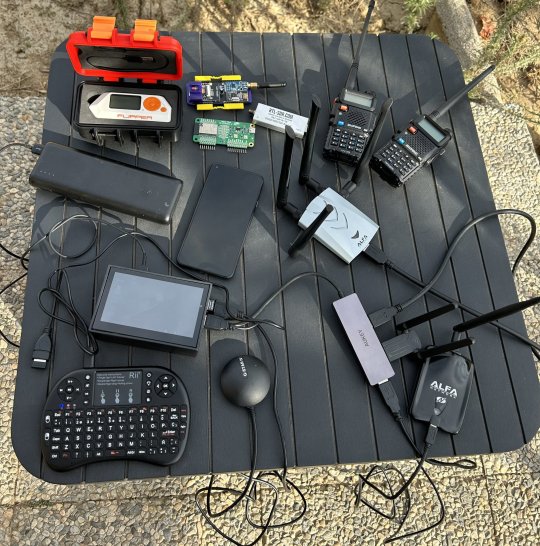
An AI-enabled radio jamming system developed by Vanderbilt researchers and tested with soldiers from the 101stAASLTDIV is being deployed for training of NATO and NATO-partner units in Europe. The ADSR system is part of the USArmy Pathfinder program.
On the right to repair, we're glad Biden pushed the 📱💻 Fair Repair Act via an EO, backed by the Hackers' advocacy campaign.
Canada and France support our American Folks. Can Oxblood and Count Zero translate this podcast for Kingpin? His hardware hacking skills are needed in avionics.





youtube


Engineers are working to make future air travel safer. They've created risk-prediction models using two decades of U.S. accident and safety records following the work of a five-year, $10 million NASA grant.
2 notes
·
View notes
Text

Future Air Combat System (FCAS) and the Military Internet of Things
Fernando Valduga By Fernando Valduga 11/22/2023 - 20:35in Military
The FCAS Air Combat Cloud (Air Combat Cloud) will bring real-time intelligence to the forefront, taking advantage of the network capabilities of different aircraft and platforms. Innovations in Artificial Intelligence (AI), big data processing and cybernetics will help make defense a truly collaborative mission.
Europe's Future Air Combat System (FCAS) will see next-generation manned jets flying alongside remotely piloted unmanned aircraft carriers of various sizes. These assets will be part of a fully interconnected "system of systems", based on open architectures, which will allow the integration of other existing platforms, such as the A400M or the A330 MRTT tanker plane. At the heart of this complex system will be the Air Combat Cloud, which will allow these platforms to work together.

But what exactly is an air combat cloud? As FCAS Combat Cloud product solution leader at Airbus, Ignacio Rosell often asks this question.
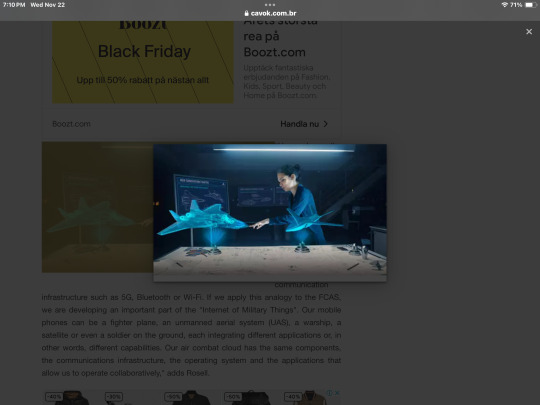
“How does the Android ecosystem work? We have an operating system that allows the integration of applications from different parts, and all this is supported by a communication infrastructure such as 5G, Bluetooth or Wi-Fi. If we apply this analogy to the FCAS, we are developing an important part of the "Internet of Military Things". Our mobile phones can be a fighter plane, an unmanned aerial system (UAS), a warship, a satellite or even a soldier on the ground, each integrating different applications or, in other words, different capabilities. Our air combat cloud has the same components, the communications infrastructure, the operating system and the applications that allow us to operate collaboratively," adds Rosell.
Launched by France, Germany and Spain, and with Airbus, Dassault Aviation and Indra as national industrial coordinators, the FCAS is one of the most important European defense programs of the coming decades. In a context of growing global instability, the objective of the project is nothing less than to design an air defense system that protects Europe, while strengthening its strategic autonomy and technological sovereignty.
Airbus leads the Combat Cloud pillar, with Thales and Indra as main partners. This is one of the seven areas of next-generation FCAS technology (see the infographic on the side), led at Airbus by Marc Paskowski.
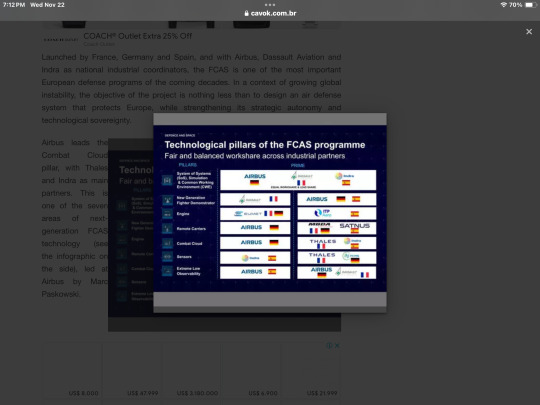
It will provide a common situational awareness, capturing, sharing, merging and instantly processing large amounts of data from all connected manned and unmanned platforms, reliably, and transforming that data into actionable information, taking advantage of constantly evolving learning technologies. "The concept based on the cloud in flight is that all elements must constantly interoperate with each other to form a cohesive system that is informed as one and fights as one," says Paskowski.
"Our 'operating system' will need to be opened to accommodate ready-to-use and tailored applications, such as manned and unmanned teams, from Airbus or any other industrial partner. It will be an evolutionary process, with new applications, such as new aerial platforms, being integrated along the way," says Rosell. "Our business model around the Combat Cloud will not be unique. An area such as satellite connectivity could be offered as a service, while an 'app' part of an aircraft's mission system could be sold as a product,” he adds.
The development of intermediate solutions as part of this "internet of military things" should allow customers to use various levels of cloud capabilities and remote operators long before FCAS became operational in the 2040s. For example, Airbus has already carried out the first successful launch and operation in the world of a Remote Carrier flight test demonstrator from an A400M in flight.
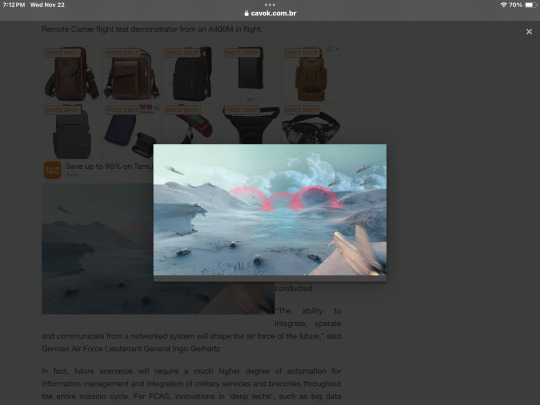
Based on this incremental approach, the air combat cloud will be the digital watershed in the way military operations are conducted.
“The ability to integrate, operate and communicate from a networked system will shape the air force of the future,” said German Air Force Lieutenant General Ingo Gerhartz
In fact, future scenarios will require a much higher degree of automation for information management and integration of military services and branches throughout the entire mission cycle. For FCAS, innovations in 'deep techs', such as big data processing, artificial intelligence and cybernetics, will provide the advanced intelligence of the cloud, allowing, for example, the distribution of Command and Control (C2) functions, including to the pilot in his fighter. and provide key stakeholders in a mission with all relevant information in real time. "This will give Air Force decision makers an unprecedented level of awareness," says Paskowski.
But with great power comes a great responsibility. With the growing dependence on artificial intelligence on everything we do as "digital citizens", and the use of platforms such as ChatGPT and its impact on the workplace, the integration of AI at the heart of FCAS Air Combat Cloud presents new challenges. Questions such as 'to what extent will the system support the decision-making process?' or 'What are the ethical criteria that can be applied to the use of this technology?'
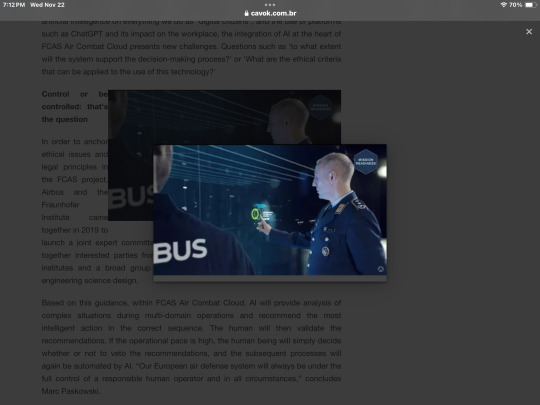
Control or be controlled: that's the question
In order to anchor ethical issues and legal principles in the FCAS project, Airbus and the Fraunhofer Institute came together in 2019 to launch a joint expert committee on the responsible use of technologies. It brings together interested parties from the German Air Force with universities, research institutes and a broad group of foundations, specialists in social sciences and engineering science design.
Based on this guidance, within FCAS Air Combat Cloud, AI will provide analysis of complex situations during multi-domain operations and recommend the most intelligent action in the correct sequence. The human will then validate the recommendations. If the operational pace is high, the human being will simply decide whether or not to veto the recommendations, and the subsequent processes will again be automated by AI. “Our European air defense system will always be under the full control of a responsible human operator and in all circumstances,” concludes Marc Paskowski.
Both technologically and militarily, the development of FCAS has the potential to establish new standards and revolutionize the use of air power.

The use of AI in Airbus
Airbus began integrating AI into its products and solutions in the 1990s, with applications for reading and interpreting satellite images.
OneAtlas imaging services harness the power of Airbus' constellation of optical and radar satellites with reliable AI and cloud technology to provide important information, for example, to combat deforestation, optimize agricultural yields and urban planning.
However, in the aeronautical sector, Airbus' Skywise big data platform collects data from 24,000 aircraft parameters, allowing airlines that subscribe to the service to perform predictive maintenance and improve the overall operational efficiency of their fleets.
Tags: airbusMilitary AviationFCAS - Future Combat Air System/Future Air Combat System
Sharing
tweet
Fernando Valduga
Fernando Valduga
Aviation photographer and pilot since 1992, has participated in several events and air operations, such as Cruzex, AirVenture, Dayton Airshow and FIDAE. He has work published in specialized aviation magazines in Brazil and abroad. Uses Canon equipment during his photographic work in the world of aviation.
Related news
WAR ZONES
AC-130J aircraft attacks militants in Iraq after first ballistic missile attack against U.S. positions
22/11/2023 - 16:00
MILITARY
F-35 fighters will cost Canada almost $54 billion in 45 years
22/11/2023 - 14:19
MILITARY
Indonesian Air Force receives new Dassault Falcon 8X aircraft
22/11/2023 - 14:03
MILITARY
Russian Air Force receives new batch of Su-34 fighter-bombers
22/11/2023 - 10:46
MILITARY
VIDEO: The impressive attack of the Houthis, with a Mi-171, on a cargo ship in the Red Sea
21/11/2023 - 23:09
BRAZIL
VIDEO: FAB celebrates 40 years of the T-27 Tucano aircraft with special paint
21/11/2023 - 19:30
Client PortalClient PortalClient PortalClient PortalClient PortalClient PortalClient PortalClient PortalhomeMain PageEditorialsINFORMATIONeventsCooperateSpecialitiesadvertiseabout
Cavok Brazil - Digital Tchê Web Creation
Commercial
Executive
Helicopters
HISTORY
Military
Brazilian Air Force
Space
Specialities
Cavok Brazil - Digital Tchê Web Creation
4 notes
·
View notes
Text
Thales and Skydweller Partner for Zero-Carbon, AI-Powered Aerial Surveillance System
Thales-Skydweller Will Jointly Develop Zero-Carbon, AI Powered Aerial Surveillance Systems: Paris, France / Oklahoma City, USA – In a significant collaboration aimed at transforming aerial surveillance capabilities, Thales, a global leader in advanced technologies, and Skydweller Aero Inc., an innovative transatlantic aerospace company, have announced a strengthened partnership. The alliance will…
0 notes
Link
0 notes
Text
Europe Imports: Trends, Challenges, and Opportunities in the Global Trade Landscape
Introduction: The Role of Imports in Europe’s Economy
Europe, home to some of the most developed economies in the world, is a major player in global trade. Imports play a crucial role in the region’s economic ecosystem, feeding its industrial base, consumer market, and service sectors. From energy and electronics to textiles and agricultural goods, Europe Imports depend on a diverse range of imports to meet domestic demands and support its industries. As globalization continues to evolve, understanding the dynamics of Europe’s import landscape is essential for policymakers, businesses, and consumers.
Key Import Categories in Europe
Europe imports a wide array of goods, with some of the most prominent categories including:
Energy Products: Crude oil, natural gas, and petroleum products are among Europe’s top imports. The region’s limited domestic energy resources make it heavily reliant on imports from countries like Russia, Norway, the Middle East, and North Africa.
Machinery and Electronics: High-tech machinery, semiconductors, and consumer electronics are primarily imported from Asia, especially China, Japan, and South Korea. These imports support Europe’s automotive, aerospace, and tech industries.
Agricultural and Food Products: Despite having a strong agricultural sector, Europe imports significant quantities of fruits, vegetables, coffee, cocoa, and seafood. These products often come from Latin America, Africa, and Southeast Asia to meet diverse consumer tastes.
Textiles and Apparel: Fashion-forward countries like Italy and France still import large volumes of textiles and finished garments, mainly from Bangladesh, India, Turkey, and China.
Raw Materials and Chemicals: Europe’s manufacturing sector depends on the steady import of raw materials like metals (copper, lithium, iron), rare earth elements, and chemicals for industrial use.
Major Trading Partners
Europe maintains robust trade relations with countries around the world. Some of its top import partners include:
China: The EU’s largest source of imports, China provides electronics, machinery, textiles, and manufactured goods.
United States: A key supplier of aircraft, pharmaceuticals, and high-tech goods.
Russia: Historically a major energy supplier, although geopolitical tensions and sanctions have shifted some of this trade.
Switzerland and the UK: Close neighbors with strong economic ties in pharmaceuticals, chemicals, and luxury goods.
Developing Nations: Countries in Africa, Asia, and Latin America supply agricultural products, raw materials, and low-cost manufactured goods.
Challenges in Europe’s Import Ecosystem
While Europe’s import network is vast and vital, it is not without challenges:
Geopolitical Tensions: Conflicts such as the Russia-Ukraine war have disrupted energy imports, leading to price hikes and a rethinking of energy strategies.
Supply Chain Disruptions: Events like the COVID-19 pandemic exposed vulnerabilities in global supply chains, affecting the timely delivery of goods.
Trade Protectionism: Tariffs, trade barriers, and political disagreements can hinder smooth import operations and increase costs for businesses and consumers.
Sustainability Concerns: The environmental impact of long-distance imports and sourcing from regions with lax environmental standards is a growing concern for European regulators and consumers.
Regulatory Compliance: Complex regulations within the EU regarding safety, labeling, and standards can pose hurdles for foreign exporters.
Opportunities for Growth and Innovation
Despite the challenges, Europe’s import sector offers ample opportunities:
Diversification of Supply Sources: Reducing dependency on a few countries by seeking alternative suppliers can enhance supply chain resilience.
Digitalization and Smart Logistics: Advanced technologies like AI, blockchain, and IoT can improve supply chain visibility and efficiency.
Green Imports: Importing sustainable products and raw materials aligns with Europe’s climate goals and the European Green Deal.
Trade Agreements: New and renewed trade deals with countries like Canada (CETA), Japan (EPA), and Mercosur nations can boost imports under preferential terms.
Support for SMEs: Simplifying import procedures and offering guidance to small and medium enterprises can help them compete globally.
Conclusion: Balancing Dependence and Independence
Europe’s import ecosystem is a complex yet essential part of its economic framework. As the continent faces new geopolitical, environmental, and technological challenges, it must strike a balance between maintaining a healthy flow of imports and building strategic independence in critical sectors. Through diversification, innovation, and sustainable practices, Europe can strengthen its position as a resilient and forward-thinking global trade partner.
Follow more information : https://europeimports.com.au/ezarri-mosaic-tiles/
1 note
·
View note
Text
Global Golf Simulator Market: Market Size, Key Players, and Future Growth Projections
Golf Simulator Market Summary
The global golf simulator market size was estimated at USD 1,749.4 million in 2024 and is projected to reach USD 2,903.7 million by 2030, growing at a CAGR of 9.4% from 2025 to 2030. The rising popularity of indoor and home-based sports experiences is driving the golf simulator industry growth.
Key Market Trends & Insights
In terms of region, North America was the largest revenue generating market in 2024.
Country-wise, South Korea is expected to register the highest CAGR from 2025 to 2030.
In terms of segment, hardware accounted for a revenue of USD 1,100.2 million in 2024.
Software is the most lucrative offering segment registering the fastest growth during the forecast period.
Market Size & Forecast
2024 Market Size: USD 1,749.4 Million
2030 Projected Market Size: 2,903.7 Million
CAGR (2025-2030): 9.4%
North America: Largest market in 2024
Golf simulators provide a convenient alternative, allowing players to practice and play the sport from the comfort of their homes or in commercial indoor facilities. The increasing demand for home entertainment Hardware, coupled with technological advancements that make golf simulators more user-friendly and interactive, is contributing to sustained market growth.
Technological advancements have revolutionized the golf simulator industry, enhancing realism, accuracy, and user experience. Artificial Intelligence (AI) plays a key role by analyzing swing mechanics, ball trajectory, and player performance in real time, providing personalized feedback and coaching insights. AI-powered simulators can track minute details such as club speed, ball spin, launch angle, and shot dispersion, helping golfers refine their skills with precision.
4K graphics and high-definition projectors have significantly improved the visual experience, making virtual golf courses more immersive and lifelike. Players can experience famous real-world courses with stunning detail, from terrain textures to weather effects, creating a near-authentic golfing environment. Motion tracking technology has also advanced, using high-speed cameras and infrared sensors to capture player movements with extreme accuracy. This ensures precise simulation of swings, putting strokes, and ball impact, making the experience more realistic.
Get a preview of the latest developments in the Golf Simulator Market? Download your FREE sample PDF copy today and explore key data and trends
Global Golf Simulator Market Report Segmentation
Grand View Research has segmented the golf simulator market report based on offering, type, simulator type, installation type, end use, and region:
Offering Outlook (Market Size, USD Million, 2018 - 2030)
Hardware
Software
Services
Type Outlook (Market Size, USD Million, 2018 - 2030)
Built-in
Portable
Free Standing
Simulator Type Outlook (Market Size, USD Million, 2018 - 2030)
Full Swing Simulator
Virtual Reality (VR) Simulator
Installation Type Outlook (Market Size, USD Million, 2018 - 2030)
Indoor
Outdoor
End Use Outlook (Market Size, USD Million, 2018 - 2030)
Residential
Commercial
Regional Outlook (Market Size, USD Million, 2018 - 2030)
North America
US
Canada
Mexico
Europe
Germany
UK
France
Asia Pacific
China
India
Japan
South Korea
Australia
Latin America
Brazil
Middle East & Africa
A.E
Saudi Arabia
South Africa
Key Golf Simulator Company Insights
In February 2025, Rapsodo Inc. partnered with TruGolf’s E6 APEX, bringing expanded simulation capabilities to its Mobile Launch Monitor 2 Pro (MLM2PRO) for premium members. This integration enhances Rapsodo’s product offerings, allowing athletes of all skill levels to experience realistic playing conditions and refine their abilities through practice rounds and skill-based games. The collaboration follows a recent update to the MLM2PRO, which improved graphic quality and introduced junior tee locations to Rapsodo’s simulated courses, enhancing the overall gaming experience and making it more family-friendly. These advancements reflect Rapsodo’s ongoing commitment to enhancing and evolving its golf technology.
In February 2025, BenQ launched the AK700ST, the latest addition to its ACE Series and its most advanced golf simulator projector to date. Featuring a 4,000-lumen 4K laser light source, the AK700ST enhances golf simulation with lifelike detail, vibrant colors, and superior texture richness. Designed for seamless installation, it minimizes ambient light interference to deliver an immersive, play-like-you’re-there experience. As the first brand to develop a dedicated projector lineup for golf simulation, BenQ continues to expand its portfolio with models ranging from 1080p to 4K, catering to golf enthusiasts seeking high-quality, realistic gameplay.
Key Golf Simulator Companies:
The following are the leading companies in the golf simulator market. These companies collectively hold the largest market share and dictate industry trends.
aboutGOLF
BenQ
Bushnell Golf
ErnestSports
Foresight Sports
Full Swing Golf
GOLFZON
Optishot Golf
SKYTRAK
GOLFJOY LIMITED
X-GOLF AMERICA
Garmin Ltd.
Toptracer
FlightScope Golf
Rapsodo Inc.
Order a free sample PDF of the Market Intelligence Study, published by Grand View Research.
0 notes
Text
Nscale and Lightning AI Partner to Launch Enterprise-grade AI Studio
Makes AI Easier to Build and Faster to Scale for Developers and Enterprise Teams Paris, France – June 11, 2025 – Nscale and Lightning AI today announced a strategic partnership bringing together intuitive AI development tools and scalable cloud infrastructure to launch a new enterprise-grade AI Studio designed to streamline the entire generative AI lifecycle from idea to production.The Nscale…
#AI#AI Studio#Artificial Intelligence#Enterprise#Information#Internet#Software Development#Software Products#Technology
0 notes
Text
Building Next-Gen Mobile Apps for Global Markets

In today’s digital-first world, businesses are constantly looking for ways to innovate and scale—especially in competitive markets like the USA, UK, UAE, Australia, and Europe. For these forward-thinking companies, investing in mobile app development services is no longer a choice but a strategic necessity.
Mobile applications have become the cornerstone of digital transformation. Whether it’s a finance app for German users, a health-tech platform for the UK, or a food delivery solution for the UAE, users expect seamless performance, intuitive design, and global scalability from the start.
Why “Next-Gen” Mobile Apps Matter
Traditional app models are no longer enough. Users now demand more than just functionality—they expect speed, personalization, and integration with emerging technologies like AI, AR, and blockchain.
Next-gen mobile apps are:
Cloud-native and scalable, enabling easy global expansion
Built with a modular architecture, allowing frequent updates without downtime
Integrated with AI/ML, enabling smart personalization and automation
Optimized for performance across diverse regions and networks
Global Reach Needs Local Understanding
One of the major challenges in global app development is creating solutions that are not just multilingual but also culturally and regionally tailored. A payment solution that works in France may not fit seamlessly in Indonesia. App developers must account for varying UX preferences, internet bandwidths, security regulations (like GDPR in Europe), and local app store optimization strategies.
Companies that succeed globally are those that combine innovation with regional sensitivity.
The Tech Stack That Powers the Future
Building globally successful apps means choosing the right tools:
Flutter & React Native for cross-platform development
Kotlin & Swift for native performance
Firebase, AWS & Azure for real-time backend infrastructure
CI/CD pipelines for continuous integration and faster deployments
This technical edge ensures apps can adapt rapidly to user needs and market changes.
Partnering with the Right Experts
When planning to launch your app in competitive markets like the US, Germany, or Australia, choosing a partner who understands global tech trends and local market dynamics is essential. That’s where experience, strategy, and innovation intersect.
Our team brings a decade of international project delivery, scalable architecture design, and UX excellence to the table. We work with startups, enterprises, and digital-first brands to craft mobile experiences that win in the global marketplace.
If you're looking to build your next big mobile idea for a global audience, it's time to partner with a mobile app development company that understands how to turn local insights into global impact.
#mobile app development services#custom app development#mobile app development company#mobile application development services#mobile application development company
0 notes
Text
IBM, Inclusive Brains Use AI and Quantum for BMI Research

Inclusion Brains
IBM and Inclusive Brains Improve Brain-Machine Interfaces with AI, Quantum, and Neurotechnologies
IBM and Inclusive Brains have partnered to study cutting-edge AI and quantum machine learning methods to improve multi-modal brain-machine interfaces (BMIs). On June 3, 2025, this agreement was launched to improve brain activity classification.
This collaborative study seeks socially beneficial innovation. BMIs may help people with disabilities, especially those who cannot use their hands or voice, regain function. By letting people control linked devices and digital settings without touching or speaking, BMIs can help patients regain control. With this study's findings, Inclusive Brains aims to expand educational and career prospects. In addition to aiding crippled people, the alliance wants to improve brain activity classification and understanding to help the public avert physical and mental health issues.
IBM AI and quantum expertise will strengthen Inclusive Brains' multimodal AI systems in the collaboration endeavour. The real-time customisation of BMIs to each user's needs and talents is being developed to increase autonomy and agency.
Comparing brain activity categorisation accuracy to current models is a major investigation phase. Using IBM Granite foundation models to generate, review, and test code helps determine the best machine learning algorithmic combinations for brain activity classification and interpretation. The project will also examine automatic selection of the optimal algorithms for specific users and their use in “mental commands” to control workstations.
The terms “mental commands,” “mind-controlled,” and “mind-written” are simplified for this study. They don't mean brainwaves read words or commands. A multimodal AI system learns from brainwaves, eye movements, facial expressions, and other physiological data. These mixed signals help the system determine human intent and operate without touch or speech.
The alliance plans several open science research publications to benefit scientists and the public. The study will also investigate quantum machine learning brain activity classification. Both organisations are committed to ensuring the study follows responsible technology principles, which include ethical concerns and neurotechnology and neurological data usage recommendations.
IBM France president Béatrice Kosowski is happy to engage with innovative firms like Inclusive Brains and responsibly provide access to IBM's AI and quantum technologies to promote healthcare.
Professor Olivier Oullier, CEO and co-founder of Inclusive Brains, said the collaborative study will assist generate highly customised machine-user interactions, signifying a shift towards unique solutions that meet each person's needs, body, and cognitive style. Inclusive Brains has demonstrated multimodal interface Prometheus BCI through public “mind-controlled” acts like tweeting, writing a parliamentary amendment, and using an arm exoskeleton.
In the last decade, BMIs have become more prevalent since they connect the brain to a computer, usually for controlling external equipment. They are useful for studying brain physiology, including learning and neuronal behaviour, as well as restoring function. This collaborative study will improve these fascinating technologies' capabilities and accessibility.
In conclusion
IBM and Inclusive Brains investigated BMI technology. The collaboration uses cutting-edge AI and quantum machine learning to classify brain activity patterns. Enabling “mental commands” based on physiological signals aims to promote disability accessibility and inclusion. Ethics and responsibility in neurotechnology use are also stressed in the study.
#InclusiveBrains#brainmachineinterfaces#IBMandInclusiveBrains#multimodalAI#neurotechnology#QuantumInclusiveBrains#technews#technologynews#news#govindhtech
0 notes
Text
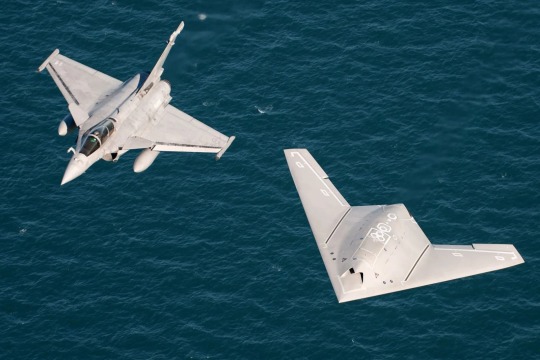
Dassault will prioritize Rafale jets and UCAVs ahead of FCAS
Fernando Valduga By Fernando Valduga 09/01/2023 - 08:31am Military
The president of the French aircraft manufacturer Dassault Aviation said this week that he will prioritize the production of Rafale fighters in the near future to meet new orders.
CEO Eric Trappier said that the company's supply meets the current needs of the military.
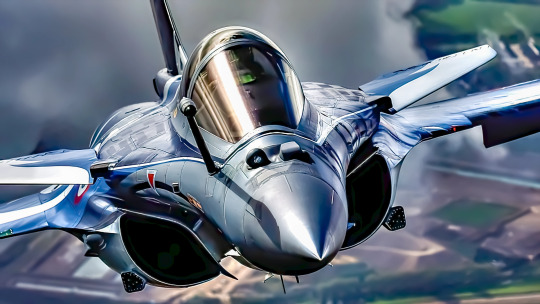
"The Rafale F5 is currently the main priority of Dassault Aviation, long before the future FCAS combat air system (SCAF in French) and combat drones (UCAVs) such as the nEUROn," Trapier said on August 29.
Trappier said that Rafale jets offer an alternative in favor of France for those who do not want to buy Russian and American aircraft, BFMTV reported.
Saying that they have orders until 2032, he noted that they will focus on increasing the production of Rafale warplanes.
The lowest priority given by Dassault to FCAS confirms the impression given by the company at the Paris air show in June.
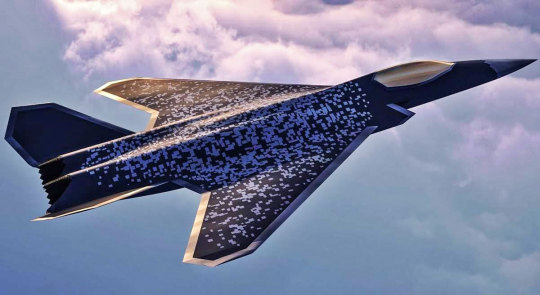
The sixth-generation FCAS under development by Dassault.
The Future Combat Air System (FCAS), the European air defense system on which Germany, France and Spain are working together, is another long-term goal of the company, he added.
Dassault began working on a demonstration aircraft at its headquarters in the Parisian suburb of Saint-Cloud, with German and Spanish teams. Dassault leads the New Generation Fighter (NGF) component of the program.
The FCAS is expected to enter service in 2040.
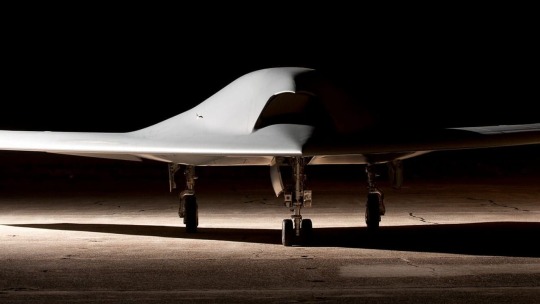
Combat drone nEUROn.
But for Eric Trappier, the priority remains the future F5 standard of his Rafale fighter.
"It will arrive after 2030, then there are the drones. So, the future fighter planes will come after that. We are in this for the short term, the medium term and the very long term," explains Eric Trappier.
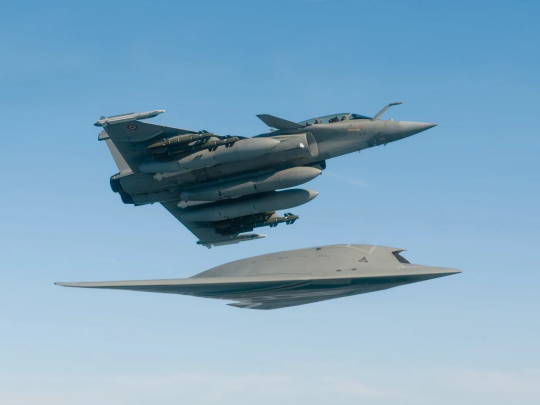
Recently, India announced its intention to buy 26 Rafale M for its naval aviation, and another 18 were ordered by Indonesia, bringing total export sales to date to 311 aircraft.
This represents twice the export sales of Eurofighter (151 aircraft), Saab Gripen (102 aircraft including those in long-term lease) and Boeing Super Hornet (48 aircraft).
Tags: Military AviationDassault AviationDassault RafaleFCAS - Future Combat Air System/Future Air Combat SystemnEUROn
Sharing
tweet
Fernando Valduga
Fernando Valduga
Aviation photographer and pilot since 1992, he has participated in several events and air operations, such as Cruzex, AirVenture, Daytona Airshow and FIDAE. He has work published in specialized aviation magazines in Brazil and abroad. Uses Canon equipment during his photographic work throughout the world of aviation.
Related news
AIRCRAFT ACCIDENTS
Accident with two Ukrainian Mi-8 helicopters causes death of six military personnel
01/09/2023 - 20:01
MILITARY
Japan's defense calls for a $53 billion budget, including F-35 fighters and hypersonic weapons development
09/01/2023 - 18:45
MILITARY
Turkey seeks partners for the TF-X hunting program amid fiscal uncertainty
01/09/2023 - 16:00
MILITARY
Shield AI demonstrates the formation of autonomous drone teams using Artificial Intelligence pilot
01/09/2023 - 14:00
MILITARY
Saab offers Gripen E aircraft to India and deep industrial cooperation
01/09/2023 - 11:00
MILITARY
Raytheon receives contract to supply AMRAAM missiles to Ukraine
09/01/2023 - 07:50
homeMain PageEditorialsINFORMATIONeventsCooperateSpecialitiesadvertiseabout
Cavok Brazil - Digital Tchê Web Creation
Commercial
Executive
Helicopters
HISTORY
Military
Brazilian Air Force
Space
Specialities
Cavok Brazil - Digital Tchê Web Creation
6 notes
·
View notes
Text
10 Essential Navy Current Affairs for 2025: What You Need to Know
10 Essential Navy Current Affairs for 2025
As global dynamics continue to shift in 2025, naval forces around the world are evolving rapidly to address emerging threats, leverage advanced technologies, and secure national interests. For defense aspirants, military analysts, and maritime watchers, staying updated on Navy current affairs is more important than ever.

Here are the 10 most essential Navy developments in 2025 that you need to know:
1. India Commissions INS Vishal – A New Era of Naval Power
India took a major leap forward in maritime strength with the commissioning of INS Vishal, its second indigenous aircraft carrier. Featuring nuclear propulsion, electromagnetic launch systems (EMALS), and a displacement of over 65,000 tons, INS Vishal boosts India’s blue-water capabilities significantly. Its integration symbolizes India's commitment to self-reliance under the Make in India initiative.
2. Quad Naval Exercises Expand in Scope and Participation
The Quadrilateral Security Dialogue (Quad) – comprising India, the U.S., Japan, and Australia – conducted its largest-ever naval drill in the Bay of Bengal in early 2025. For the first time, navies from the UK and France participated as observers, highlighting growing global interest in Indo-Pacific security. Exercises included anti-submarine warfare, carrier strike operations, and cyber defense simulations.
3. Indian Navy Greenlights AI-Powered Submarine Surveillance Systems
To enhance maritime domain awareness, the Indian Navy has partnered with domestic tech firms to deploy AI-powered underwater drone swarms for submarine tracking and oceanographic monitoring. These systems use real-time data analytics, sonar mapping, and autonomous maneuvering, marking a shift toward a more tech-centric naval doctrine.
4. Launch of the P-75I Submarine Program
India’s long-awaited Project 75 (India) or P-75I, which aims to build six next-generation stealth submarines, has officially commenced. The project will be executed under the Strategic Partnership model, with significant Transfer of Technology (ToT) components. The submarines will feature Air-Independent Propulsion (AIP) and advanced weaponry for extended missions in hostile environments.
5. Global Naval Presence in the Red Sea Amidst Middle East Tensions
In response to escalating tensions in the Red Sea and the Gulf of Aden, multiple countries, including the U.S., France, and India, have deployed naval assets to secure commercial shipping routes. Indian Navy destroyers INS Kolkata and INS Chennai were instrumental in conducting anti-piracy operations and humanitarian assistance in early 2025.
6. Indian Navy’s Maiden Arctic Expedition
In a first, the Indian Navy launched a scientific and navigational expedition to the Arctic Ocean in collaboration with the Ministry of Earth Sciences. The mission aims to assess Arctic shipping routes and understand the implications of melting polar ice on future naval operations and climate strategy. It symbolizes India's growing interest in polar geopolitics.
7. Launch of Indigenous Naval Utility Helicopters (NUH)
The Indian Navy has inducted the first batch of Naval Utility Helicopters (NUH) developed by Hindustan Aeronautics Limited (HAL). These multipurpose helicopters are replacing the aging Chetak fleet and are equipped for Search and Rescue (SAR), logistics, and reconnaissance missions. Their indigenous nature is a boost to the Atmanirbhar Bharat defense vision.
8. Operationalization of the Maritime Theatre Command (MTC)
A significant structural reform in India’s defense architecture was the operational launch of the Maritime Theatre Command in March 2025. The MTC integrates assets and personnel from the Navy, Coast Guard, and other services to enable joint operations across the Indian Ocean Region (IOR). It enhances response time and mission efficiency in crises.
9. Indo-French Naval Synergy Strengthens in 2025
The India-France defense partnership reached new heights with the Varuna 2025 joint exercise, conducted in the Arabian Sea. The exercise featured joint carrier group operations, showcasing interoperability between the French aircraft carrier Charles de Gaulle and India’s INS Vikrant. France’s renewed Indo-Pacific strategy highlights India as a key maritime partner.
10. Sagar Parikrama 2.0: Navy’s Outreach to Coastal Communities
Continuing its civil-military integration initiative, the Indian Navy relaunched Sagar Parikrama 2.0 — a pan-India outreach program aimed at engaging with fishermen, coastal stakeholders, and youth. Through mobile naval exhibitions, welfare campaigns, and recruitment drives, the initiative strengthens grassroots support for national maritime security.
Conclusion
The Navy's role in shaping regional and global security is more critical than ever in 2025. From indigenous technology advancements to strategic international cooperation and climate-resilient missions, the developments in naval affairs are not just operational—they’re transformational.
For defense aspirants and maritime professionals alike, keeping abreast of such developments isn’t just helpful—it’s essential. With the Indian Navy set to play a pivotal role in the Indo-Pacific’s future, the waters ahead promise both challenges and opportunities. Stay informed, stay prepared.
0 notes
Link
0 notes